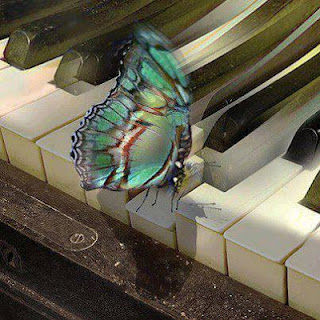Teaching Composition
I recently read this great article from Ezra Weiss, Helping Students Find Their Voice as a Composer. He suggests students attempt to write a tune every day. I especially like #11. Here's part of Mr. Weiss' notes.
My students generally spend their first year writing lead sheets before moving on to writing for jazz combo, then big band, and then studio orchestra and traditional chamber ensembles. This initial emphasis on lead sheets allows us to focus on melody, harmonic motion, and form. These elements provide the foundation of a composition, so they must be strong before we build an arrangement on top of them...
Most importantly, writing a lead sheet every day allows us to experiment with writing many different types of tunes. Students often find it helpful to keep a list of ways to write tunes. While this list initially may seem creatively limiting, our most creative ideas are often born out of these limitations. Here is a sample list.
Some Ways to Write Tunes:
1. Sing a melody
2. Feel a groove
3. Come up with the rhythm first, then hear the pitches
4. Based on a musical concept, polytonality, set theory, mixed meter, etc.
5. Inspired by a mood
6. Inspired by a place
7. Inspired by an emotion
8. Programmatic music
9. Use words: text-oainting, lyrics
10. Traditional forms: AABA. ABAC, Blues
11. Come up with the chord changes first
12. Bass Line
13. Use a phrase from the "stream of consciousness" exercise
14. Use elements of music from a different culture
15. Write for a specific performance space (concert hall, football game, recording studio, etc.)
16. Write with someone else's band in mind
17. Imitate someone else's style
18. Ask yourself, "What do I want to hear?"
19. Ask yourself, "What do I want to say?"
20. Ask yourself, "What do I want to play?"
As students seek inspiration for new tunes, they may also find it useful to keep a notebook filled with other lists.
1. Musical ideas: melodic phrases, rhythms, chord progressions, etc.
2. List of words to look at while composing: melody, harmony, rhythm, dynamics, space, range, color, timbre, structure, form, etc.
3. Listening log: include title, composer, performers, year, personal observations about the piece.
4. List of "Moving Musical Moments": specific points in a piece of music that the student finds personally moving. These are powerful moments that strike a nerve, give chills, or cause a sudden smile. An example would be "The Beatles" - "Golden Slumbers" (0:32) - drums enter going into the chorus.
5. List of titles for pieces to write someday
Studying the works of other composers also plays an important role in a student's development... Students may also choose to study musical scores and fake books. Of course, reading books about music is also essential to obtaining necessary compositional skills... As we help students to find their compositional voice, certain practical tips will provide invaluable.
1. Go for walks. Get out of the practice room and walk around somewhere that inspires the music in your head. Once you hear it in your head, then you can go back to the practice room, figure out what it is, and write it down. As Wendell Logan often said, "Music is not about music."
2. Don't push the music around. Rather than trying to force the music to fit our preconceptions, we will find much more success in trying to hear what direction the music wants to go.
3. Take risks. You will either discover a new musical possibility, or you will learn of something to avoid in the future. Either way, trial and error is a valid approach to composition and learning.
4. Set specific goals with deadlines. Compositions requires time, and time management skills will help give you that.
5. Have lots of staff paper handy. As you throw away 90 percent of your writing, you do not want to be worrying about running out of paper. Think bulk quantities.
Finally, we as teachers can directly help students find their own compositional voice by asking what they think about their music. What effect does this have? Is that the effect you were hoping to create? How could we create more tension/surprise/continuity/etc?
By seeking students' thoughts, we directly help them find their compositional voice.
Ezra Weiss is a composer/pianist who holds a Bachelors in Jazz Composition from the Oberlin Conservatory and a Masters in Piano from Queens College. For more information visit, www.ezraweiss.com
So, have you tried writing some songs or have song writing friends? Do you hear the melody first or do you write out the lyrics at the beginning? I work on the chord progressions and then go back and fill my song in. I'm new at this so I am learning from other songwriters.
You may be interested in Musician Transformation & Gospel Music Training Center 30 Day Trial
Dear Readers,
In a few weeks you will no longer be able to follow my blog from Google Friend Connect. You can click on Blog Lovin in the sidebar and follow there.
Thanks for following my blog.

"Jazz washes away the dust of every day life." -- Art Blakey




















